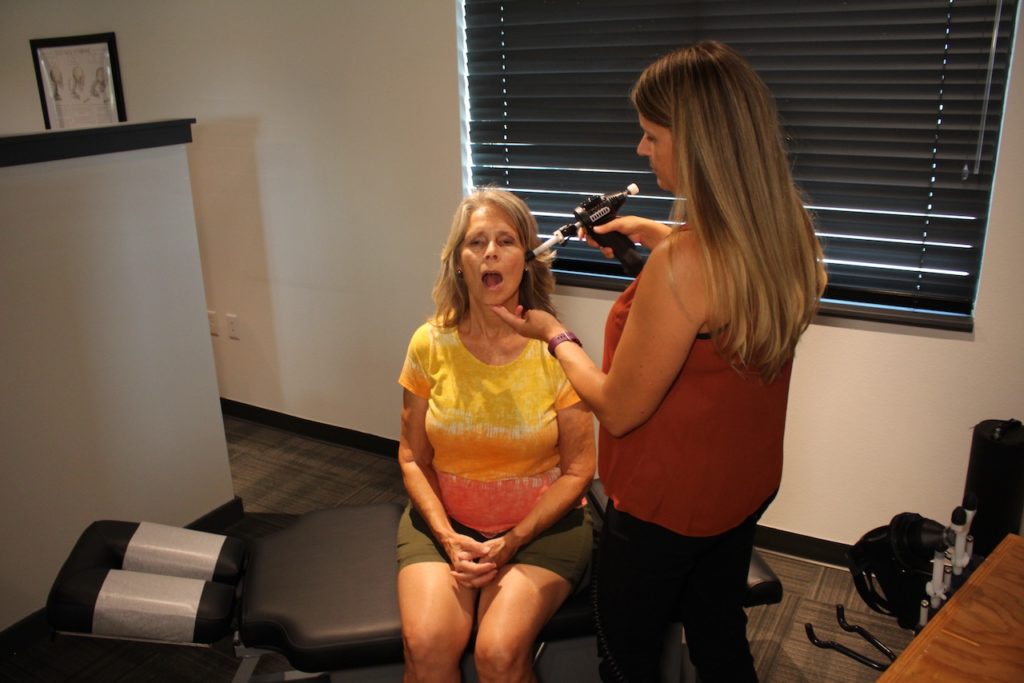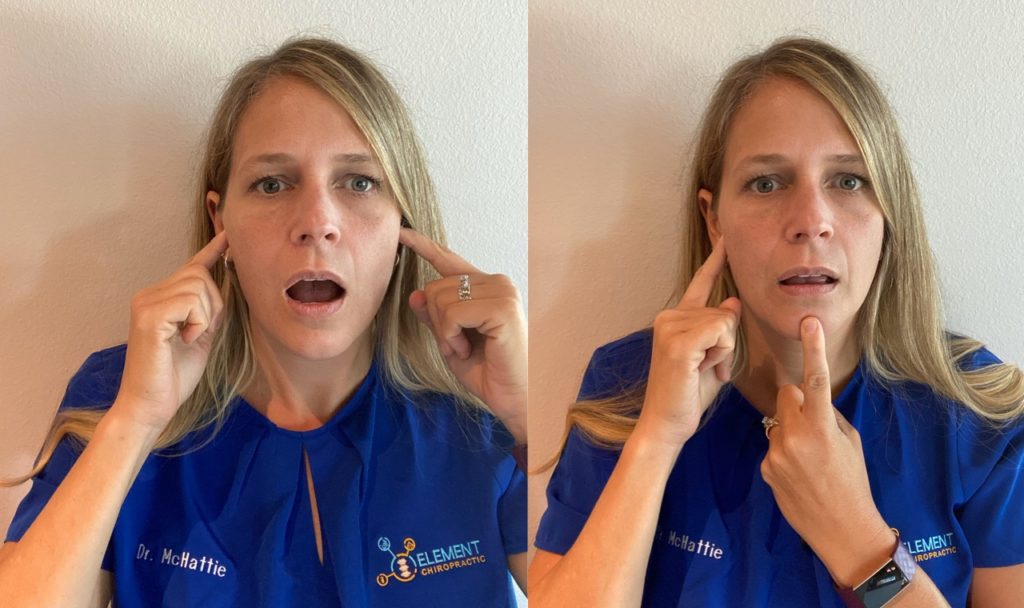
TMJ is a huge bummer and can affect your daily life. Learn about some of the symptoms of TMJ and what you can do about them.
You’ve heard of TMJ, which is actually the name of the jaw joint. But maybe you haven’t heard of TMD: it’s short for temporomandibular disorder, the medical term for pain in the jaw muscles, temporomandibular joints, or nerves in the associated area. TMD includes the well-known pain associated with the highly complex TMJ (temporomandibular joint). TMD can also be signified by: a jaw that clicks or locks, difficulty chewing, and the presence of any jaw disc problems, such as a slipped disc–your jaw has discs, just like your spine does. And where there’s a disc, there’s a chance that it can slip painfully out of place.
Disorders of the temporomandibular area can be caused by bruxism (teeth clenching or grinding), or it can be caused by trauma to the jaw, head, or neck areas. In rarer circumstances, TMD can be caused or worsened by arthritis or fibromyalgia.
If you think you have TMD, it’s probable. More than 1 in 4 people are affected by it1. If you’re a female patient, it’s even more probable, with women being twice as likely as men to be affected by TMD2. TMD is associated with cervicogenic headaches, which start in the back or base of the skull and extend down the neck and between the shoulder blades, and is caused by issues with the cervical spine. TMD is also associated with a forward head posture, teeth grinding or clenching (bruxism), and/or limited mouth motions, and TMD can occasionally cause ringing in the ears (tinnitus).
In addition to trauma or teeth clenching, TMD symptoms can be aggravated excessive chewing and by lengthy dental procedures, like root canals, or dental procedures that require one’s mouth to be open more widely for extended periods, like having your wisdom teeth pulled–goodbye, third molars, hello, jaw pain? Not if we can help it–and we can!
If you’re finding yourself in a popping or locking situation with your jaw, call your chiropractor. At Element Chiropractic, we have various techniques and tools at our disposal to help with your discomfort. For example, gentle instrument manipulation techniques with the Arthrostim can help with TMJ problems by gently improving your joint function3.
In addition to using a gentle instrument to manipulate your jaw, Element Chiropractic can help through spine adjustments, including the cervical and upper thoracic areas, leading to restored alignment and motion to relieve tension on the jaw area. Trigger point therapy (focusing on and relieving knots in muscles) and soft tissue massage can also be performed to release tension and pain from your TMD.

As a patient, it is also helpful to have a little control over your treatment as well. For that reason, Element Chiropractic can help you practice TMJ relaxation and strengthening exercises, work through breathing exercises, and help improve your posture with a cervical and shoulder girdle. For example, exercises such as relaxed jaw, goldfish (partial or full) exercises, chin tucks, wall angels, and belly breathing are all helpful in strengthening and aid in the relaxation of the areas of the body that impact your TMD.

Maybe you’re not sure what step to take next. Think through what makes your jaw hurt and avoid it or improve it.
Since dental work can sometimes exacerbate your TMD symptoms, be proactive and make a plan before you go. Take over-the-counter anti-inflammatory medications or muscle relaxers before your dental procedure. If you have diagnosed/known TMD, do your best to limit your dental procedure time to under 2 hours, and communicate this time frame with your dentist before your visit. Plan farther ahead, and schedule a chiropractic appointment with soft tissue massage the same day following your dental visit so that we can ensure you are realigned and your jaw is relaxed after your procedure. We can also help you re-learn your exercises to strengthen and relax your tight ligaments in the jaw area during your chiropractor appointment. Finally, having an ice or heat pack handy to place on the area can help relieve some of the pain you may experience after your dental appointment. This works through minimizing swelling (cold) and relaxing muscles, and opening blood vessels to aid in healing (heat).
Many patients come to us unsure of what may be triggering their TMD. For example, we often see patients who are avid gum chewers, nail biters, or are experiencing high levels of stress (that lead to unconscious teeth clenching while asleep or awake). We give self-care instruction to our patients by telling them to avoid specific foods (chewy baked goods4, candy, whole apples, etc.), stop chewing gum, and find ways to manage stress and promote relaxation in their lives. (Easier said than done, we know. Maybe now is the time to sign up for that yoga class.)
You may have avoided making your TMJ or TMD worse, but it hasn’t yet improved. But, don’t give up yet–healing can take time! Chiropractic care with Element Chiropractic can help correct some of the alignment issues contributing to your TMD. By focusing on chiropractic adjustments to the TMJ, cervical, thoracic and lumbar spine, as well as the pelvis and shoulders, we can help you bring your body back into alignment, giving you relief to your TMD symptoms. We’ll also help relax the tension in your TMJ through soft tissue massage and trigger point therapy, focusing on the tight and tense problem areas until they become relaxed and relieved. This can include focusing treatment on the neck muscles, which can also contribute to TMJ pain.
Other options for TMD include a referral out for acupuncture or wearing a night splint. Night splints can either be purchased over-the-counter at your drug store, or you can obtain a custom-fitted night splint through a visit to your dentist. Night splints can help move the lower jaw into the natural position when worn over a few weeks to a few months, depending on the severity of the TMD. On rare occasions, TMD may require injections or surgery if alternative solutions have been exhausted.
TMD treatment can be more successful with a two-practitioner approach. Element Chiropractic would be happy to collaborate with a dentist–please let us know if you have a dentist in the area. We will attempt to work together to help alleviate your TMD pain and troubleshoot its cause.
You don’t have to grit your teeth through the pain anymore. Instead, find the right TMD solution–at Element Chiropractic.
Footnotes
Copyright @2025 Element Chiropractic — 875 SW Rimrock Way Suite 103, Redmond, OR 97756